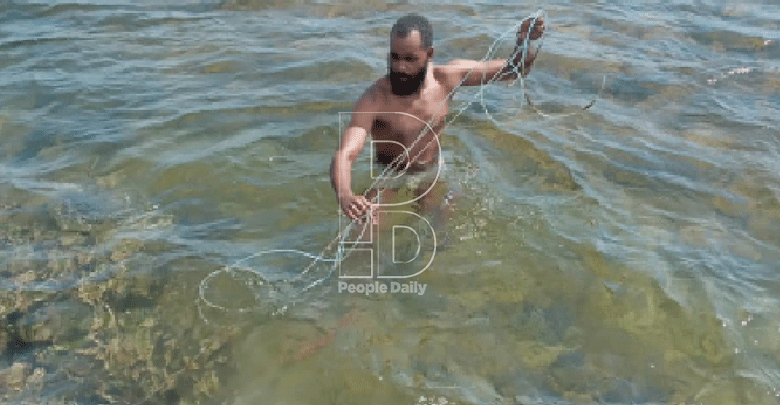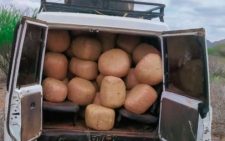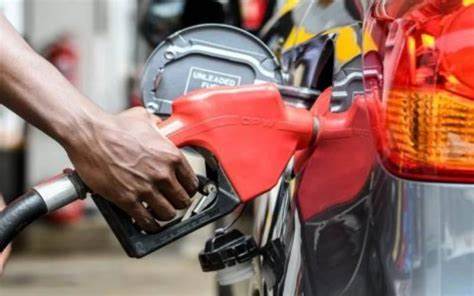Climate change takes toll on Lamu fishing activities

Residents of Lamu Island have since time immemorial been dependent on the ocean as their source of livelihood.
A majority of its inhabitants are fishermen. And they are equally huge consumers of fish.
Most families invest in boats that will allow the men to go fishing while the women sell the fish to consumers.
This in the past years had been a perfectly sustained lifestyle until about five years ago when things started changing.
Today, fishing has become an endangered activity at sea and fishermen can barely make ends meet.
“Our income has gone down. When heat increases, the water becomes shallow and the tides low.
More heat makes the water hot so the fish go deeper into the sea to get the temperature that can sustain its life too.
The increase in temperature kills the minerals too, and as fishermen, we can’t go that far,” shares Mohamed Kassim, a fisherman in Pate, Lamu.
He adds, “The corals have been dying too, so the coral fish are also moving away.
As an island that is dependent on the sea, there are only more fishermen joining in the livelihood by the day, so there is also pressure on us for over fishing.
Things have become really hard in the last say five years and our income even lower.”
To get more money, they need to catch more fish. And to meet their needs, they are forced to sell the little they get at a higher price.

In the previous years, Kassim could catch up to five tonnes per day, but today, the most he gets is two tonnes. This is directly reflected on the vendors as well.
“My whole family is dependent on fishing. We have a boat and my father, uncle and brothers go out to sea for many days to get a bigger catch. While I buy from them, fry and sell to the consumers.
In the previous years, we used to get a lot of fish. When my father would go out to sea, in a week, he would return with at least seven tonnes of fish, but nowadays he can get even 100 kilogrammes.
I equally hear them complain about the situation. In the past, they would make Sh30,000, but today if they make much, its Sh9, 000.
While for myself, I would buy at a smaller scale, with at most Sh100 per kilogramme, but today it is Sh250,” says Husna Bakari, a fish vendor.
For crab fishers on the island, the impacts of climate related changes are already being felt, with a general decline in catch per unit effort being cited as the most visible.
A majority of them thought temperature and precipitation changes are key drivers of variations reported on crab catches. Going by current projections, it is apparent that climate change will continue to pose serious threats to their livelihoods now and in the future.
Declining catch
Katana Baya, a master’s student at the University of Nairobi and a Climate Change and Adaptation fellow, has for over two years been researching on the impacts of climate change within the location.
“Generally, climate change induced alteration of the ocean and associated ecosystems through sea level rise, acidification, shifts in the monsoon wind patterns, precipitation changes and sea surface temperature increase.
It has altered the breeding, feeding, migration, growth, mortality and reproduction behaviours of mangrove-dependent fish species,” he says.
He adds that globally, climate models have projected a continuation of human-induced climate change in the first century of the third millennium.
“Going by the current greenhouse gas emission levels, the global average temperature is expected to rise by up to five degrees Celcius by the end of the 21st century.
Worryingly, various reports have asserted that even if countries fulfil their obligations to the Paris Climate Change Agreement, it is still highly likely that global warming will exceed three degrees celcius by the end of the current century,” says the researcher.
According to his research and within the Kenyan context, average temperature has increased by 0.34 degrees celcius per decade between 1985 and 2015, while sea level rise of 5.8 centimetres was recorded between 1932 and 2001.
Current climate models have projected that the country will record 1.2- 2.2 degrees Celcius and 16-42 cm increase in average temperature and sea level rise respectively by 2050.
“The greatest threat to crab fishing is mangrove cutting whose effects on the production of crabs have been aggravated by an increase in number of crab fishers over the last few years.
Crab fishing is attractive to most locals due to the high returns and the freedom to earn individually compared to other forms of fishing that require people to work in groups,” says Baya.
He adds that crabs are usually classified into grade categories, with grade B and C becoming more common among the ones caught recently, while grade A has diminished. This means crabs do not get sufficient time to grow and gain sufficient weight.
As Simon Komu, the county fisheries officer adds, climate change has resulted in the increase of El-ninos, which causes large quantities of rain water to empty into the ocean. This increases algae blooms, which result into fish mortality.
The rain water comes with soil, which cover the corals and bleach them. The coral fish supposed to replenish the bigger fish are then impacted and the bigger fish are no longer attracted to these areas, so they move further into the sea.
Balancing levels
“The soil from rain water clog the gills of mangroves, which are breeding places for smaller fish.
This causes natural deaths of the mangroves, they start to dry up and the breeding of fish in turn becomes low.
The rise of sea levels has also been affecting fishing structures, such as cold rooms, causing them to crack.
It has made oceanographic currents stronger, which, in turn has posed a security threat to fishermen.
There are more and more cases of boats capsizing and more fish are migrating to find the balancing levels,” he said.
The county has resorted to sensitising locals and fishermen on what is happening so they are well prepared and equipped it.
“It is important that the locals and fishermen understand that things are changing and the sea has been affected.
The sea has also become rough for them, so we are opting to motorise boats, by giving them engines.
We are also investing more resources in cold rooms, ice plants and cooling systems to stop fish from decaying and depreciating, and teaching fishermen other options for when fish becomes inaccessible,” shared the fisheries official.
Johnstone Omukoto, Fisheries Research Scientist at Kenya Marine and Fisheries Research Institute, said, as a coping and adaptation mechanism, Lamu communities are planting mangroves for mitigation, and growing alternative trees for wood.
“Mangroves are essential in maintaining water quality. With their dense network of roots and surrounding vegetation, they filter and trap sediments, heavy metals, and other pollutants.
This ability to retain sediments flowing from upstream prevents contamination of downstream waterways and protects sensitive habitat, such as coral reefs and sea grass beds below.
At the same time, mangroves isolate carbon at a rate of two to four times greater than mature tropical forests and store three to five times more carbon per equivalent area than tropical forests, such as the Amazon rainforest.
This means that conserving and restoring mangroves is essential to fighting climate change, the warming of the global climate fueled by increased carbon emissions, that is already having disastrous effects on communities worldwide.
This through the Mikoko project, which has proved to be successful in conserving and restoring the mangroves,” he said.









